Nominations for the 2021-2022 Freshman Common Reading are officially closed.
Our finalists for 2021-2022 are:
- The Nickel Boys, by Colson Whitehead
- Darius the Great is Not Okay, by Adib Khorram
- The Common Good, by Robert B. Reich
- When They Call You A Terrorist: A Black Lives Matter Memoir, by Patrisse Khan-Cullors & asha bandele
Members of the CSUN community (students, faculty, staff, and alums) are invited to submit their opinion about any of these nominated titles by emailing Susanna Eng-Ziskin (susanna.eng[at]csun.edu)
If you'd like to nominate a title for CSUN's 2022-2023 Freshman Common Reading, please read the selection criteria and then fill out our brief online nomination form. For more information, read about our nomination process.
From the publisher: When Elwood Curtis, a black boy growing up in 1960s Tallahassee, is unfairly sentenced to a juvenile reformatory called the Nickel Academy, he finds himself trapped in a grotesque chamber of horrors. Elwood’s only salvation is his friendship with fellow “delinquent” Turner, which deepens despite Turner’s conviction that Elwood is hopelessly naive, that the world is crooked, and that the only way to survive is to scheme and avoid trouble. As life at the Academy becomes ever more perilous, the tension between Elwood’s ideals and Turner’s skepticism leads to a decision whose repercussions will echo down the decades. Based on the real story of a reform school that operated for 111 years and warped the lives of thousands of children, The Nickel Boys is a devastating, driven narrative that showcases a great American novelist writing at the height of his powers. Fabricant adds: I think that this book would engage freshman with its writing style, characters, and topic. Additionally, given that it is based on an actual reform school that just recently closed would allow for deeper discussions and would lend itself to research in a variety of courses and contexts. I could see this book sparking many conversations around racism, exploitation, hope, trauma, upward mobility, ethics, and more that would allow students to grow intellectually and that would address significant issues. Colson Whitehouse on PBS Newshour (video) It is available as a print book, an audiobook, and an ebook from the Los Angeles Public Library (LAPL). |
From the publisher: Darius Kellner speaks better Klingon than Farsi, and he knows more about Hobbit social cues than Persian ones. He’s a Fractional Persian—half, his mom’s side—and his first-ever trip to Iran is about to change his life. Darius has never really fit in at home, and he’s sure things are going to be the same in Iran. His clinical depression doesn’t exactly help matters, and trying to explain his medication to his grandparents only makes things harder. Then Darius meets Sohrab, the boy next door, and everything changes. Soon, they’re spending their days together, playing soccer, eating faludeh, and talking for hours on a secret rooftop overlooking the city’s skyline. Sohrab calls him Darioush—the original Persian version of his name—and Darius has never felt more like himself than he does now that he’s Darioush to Sohrab. Adib Khorram’s brilliant debut is for anyone who’s ever felt not good enough—then met a friend who makes them feel so much better than okay. Eng-Ziskin adds: It's a coming of age story, of a half Persian, half American teenage boy, going to visit Iran with his family and meeting many of his extended family for the first time. It's also a fish out of water story. Darius is also dealing with issues pertaining to sexuality, mental health, parental relationships, and bullying. Khorram speaks at FYE 2020 (video) The book is available as a print book, an ebook, and an audio book from the Los Angeles Public Library (LAPL). |
From the publisher: Robert B. Reich makes a powerful case for the expansion of America’s moral imagination. Rooting his argument in common sense and everyday reality, he demonstrates that a common good constitutes the very essence of any society or nation. Societies, he says, undergo virtuous cycles that reinforce the common good as well as vicious cycles that undermine it, one of which America has been experiencing for the past five decades. This process can and must be reversed. But first we need to weigh the moral obligations of citizenship and carefully consider how we relate to honor, shame, patriotism, truth, and the meaning of leadership. Powerful, urgent, and utterly vital, this is a heartfelt missive from one of our foremost political thinkers. Spector adds: Reich is by turns thought-provoking and provocative in this short book (10 chapters in 184 pages) (#1). He is often successful in steering clear of partisan politics. His arguments are admirably clear and backed up with compelling quotes and examples. (#2) The solutions he proposes are imperfect but also inspiring, and in the final chapter, his focus is on "Civic Education for All" including "two years of required public service" for young people (#3). He calls attention to pressing challenges including segregation, extreme income inequality, "truthiness," and his belief that "truth itself is [now] imperiled as a common good" (#4 & #5). NY Times book review Publisher's Weekly review Robert Reich on UCTV (video) The book is available as a print book, an audiobook, and an ebook from the Los Angeles Public Library (LAPL). |
From the publisher: Raised by a single mother in an impoverished neighborhood in Los Angeles, Patrisse Khan-Cullors experienced firsthand the prejudice and persecution Black Americans endure at the hands of law enforcement. For Patrisse, the most vulnerable people in the country are Black people. Deliberately and ruthlessly targeted by a criminal justice system serving a white privilege agenda, Black people are subjected to unjustifiable racial profiling and police brutality. In 2013, when Trayvon Martin’s killer went free, Patrisse’s outrage led her to co-found Black Lives Matter with Alicia Garza and Opal Tometi. Condemned as terrorists and as a threat to America, these loving women founded a hashtag that birthed the movement to demand accountability from the authorities who continually turn a blind eye to the injustices inflicted upon people of Black and Brown skin. Championing human rights in the face of violent racism, Patrisse is a survivor. She transformed her personal pain into political power, giving voice to a people suffering inequality and a movement fueled by her strength and love to tell the country—and the world—that Black Lives Matter. When They Call You a Terrorist is Patrisse Khan-Cullors and asha bandele’s reflection on humanity. It is an empowering account of survival, strength and resilience and a call to action to change the culture that declares innocent Black life expendable. Alonzo adds: This is the story of Patrisse Khan-Cullors, an artist, organizer, freedom fighter from Los Angeles, and a co-founder of Black Lives Matter. In this book, Patrisse discusses the never-ending profiling, criminalization and police brutality of Black people in America. She shares very personal experiences of her own life and of those who are close to her who have suffered at the hands of those who swore to protect them. This is the book that everyone needs to read, as it is relevant to what is taking place at this precise moment in time. We are living in a time in which a generation is waking up to the sound of an alarm that this country has been hitting the snooze button on for over 400 years. Undoubtedly, a must read for Freshman students. A conversation with Patrisse Khan-Cullors and asha bandele (video) The book is available as a print book, an audiobook, and an ebook from the Los Angeles Public Library (LAPL). |
From the publisher: Sixteen-year-old Starr Carter moves between two worlds: the poor neighborhood where she lives and the fancy suburban prep school she attends. The uneasy balance between these worlds is shattered when Starr witnesses the fatal shooting of her childhood best friend Khalil at the hands of a police officer. Khalil was unarmed. Soon afterward, his death is a national headline. Some are calling him a thug, maybe even a drug dealer and a gangbanger. Protesters are taking to the streets in Khalil’s name. Some cops and the local drug lord try to intimidate Starr and her family. What everyone wants to know is: what really went down that night? And the only person alive who can answer that is Starr. The book is available from the Oviatt Library and may be available through CSU+ from another CSU campus. It is also available as a print book, an ebook, and an audio book from the Los Angeles Public Library (LAPL). Barrera adds: The book provides a very controversial topic about the police brutality towards African Americans. It makes people see the issue of the brutality. Interview with Angie Thomas (video) The book is available as a print book, an ebook, and an audio book from the Los Angeles Public Library (LAPL). |
From the publisher: In 1947, Thomas J. Watson set out to find the best and brightest minds for IBM. At City College he met young accounting student John Stanley Ford and hired him to become IBM’s first black software engineer. But not all of the company’s white employees refused to accept a black colleague and did everything in their power to humiliate, subvert, and undermine Ford. Yet Ford would not quit. Viewing the job as the opportunity of a lifetime, he comported himself with dignity and professionalism, and relied on his community and his "street smarts" to succeed. He did not know that his hiring was meant to distract from IBM’s dubious business practices, including its involvement in the Holocaust, eugenics, and apartheid. While Ford remained at IBM, it came at great emotional cost to himself and his family, especially his son Clyde. Overlooked for promotions he deserved, the embittered Ford began blaming his fate on his skin color and the notion that darker-skinned people like him were less intelligent and less capable—beliefs that painfully divided him and Clyde, who followed him to IBM two decades later. From his first day of work—with his wide-lapelled suit, bright red turtleneck, and huge afro—Clyde made clear he was different. Only IBM hadn’t changed. As he, too, experienced the same institutional racism, Clyde began to better understand the subtle yet daring ways his father had fought back. Brown adds: I think it would be interesting for students to learn about the birth of technology and Ford even goes into racist algorithms and why black Americans did not vote in the 2016 election. He addresses racism, technology, American and world history, slavery, education, and more. In addition, when Ford talks about technology, such as punch cards or the cloud, he does so in an easy to understand yet not condescending manner. I can easily see this book working well with Africana Studies, English, Computer Science, and History. It even works with Psychology and CADV as there is quite a bit of narrative about his family and relationships. Information from Publisher's Weekly Ford talks about his book on C-SPAN (video) The book is available as a print book and an ebook from the Los Angeles Public Library (LAPL). |
From the Publisher: Claudia Rankine's bold new book recounts mounting racial aggressions in ongoing encounters in twenty-first-century daily life and in the media. Some of these encounters are slights, seeming slips of the tongue, and some are intentional offensives in the classroom, at the supermarket, at home, on the tennis court with Serena Williams and the soccer field with Zinedine Zidane, online, on TV—everywhere, all the time. The accumulative stresses come to bear on a person's ability to speak, perform, and stay alive. Our addressability is tied to the state of our belonging, Rankine argues, as are our assumptions and expectations of citizenship. In essay, image, and poetry, Citizen is a powerful testament to the individual and collective effects of racism in our contemporary, often named "post-race" society. Wightman adds: This is a challenging, genre-bending work that speaks about African American experience in the late twentieth- and twenty-first centuries. The Los Angeles Review of Books PBS interview with Claudia Rankine (video) The book is available as an ebook, audio book, and print book from the Los Angeles Public Library (LAPL). |
From the publisher: In her debut novel Etaf Rum tells the story of three generations of Palestinian-American women struggling to express their individual desires within the confines of their Arab culture in the wake of shocking intimate violence in their community—a story of culture and honor, secrets and betrayals, love and violence. Set in an America at once foreign to many and staggeringly close at hand, A Woman Is No Man is an intimate glimpse into a controlling and closed cultural world, and a universal tale about family and the ways silence and shame can destroy those we have sworn to protect. Palestine, 1990. Seventeen-year-old Isra prefers reading books to entertaining the suitors her father has chosen for her. Over the course of a week, the naïve and dreamy girl finds herself quickly betrothed and married, and is soon living in Brooklyn. There Isra struggles to adapt to the expectations of her oppressive mother-in-law Fareeda and strange new husband Adam, a pressure that intensifies as she begins to have children—four daughters instead of the sons Fareeda tells Isra she must bear. Brooklyn, 2008. Eighteen-year-old Deya, Isra’s oldest daughter, must meet with potential husbands at her grandmother Fareeda’s insistence, though her only desire is to go to college. Deya can’t help but wonder if her options would have been different had her parents survived the car crash that killed them when Deya was only eight. But her grandmother is firm on the matter: the only way to secure a worthy future for Deya is through marriage to the right man. But fate has a will of its own, and soon Deya will find herself on an unexpected path that leads her to shocking truths about her family—knowledge that will force her to question everything she thought she knew about her parents, the past, and her own future. Brown adds: I was immediately swept into this book, knowing very little about Palestine and arranged marriages. This is a new look at immigrants coming to America, specifically New York, and in this case outer-borough Brooklyn, and trying to make sense of two conflicting cultures. Per the title, the protagonist understands fully that her opportunities are hampered by her gender. Johnson adds: A compelling novel and interesting story of three Palestinian women and the struggle between cultural tradition, identity, and progress. I think this book would engage freshmen and draw them into reading and reflection. Students could reflect on deeper questions of heritage, family tradition, and breaking away in order to forge your own path. Book review from the Washington Post PBS Interview with Etaf Rum (video) It is available as a print book, an audiobook, and an ebook from the Los Angeles Public Library (LAPL). |
From the publisher: By the time he was twenty-seven years old, Kwame Onwuachi had opened—and closed—one of the most talked about restaurants in America. He had sold drugs in New York and been shipped off to rural Nigeria to “learn respect.” He had launched his own catering company with twenty thousand dollars made from selling candy on the subway and starred on Top Chef. Through it all, Onwuachi’s love of food and cooking remained a constant, even when, as a young chef, he was forced to grapple with just how unwelcoming the food world can be for people of color. In this inspirational memoir about the intersection of race, fame, and food, he shares the remarkable story of his culinary coming-of-age; a powerful, heartfelt, and shockingly honest account of chasing your dreams—even when they don’t turn out as you expected. Joseph adds: Kwame's memoir provides not only diverse cultural perspectives about growing up African American in the US but also addresses issues such as abuse, drugs and trying to find your place in this world. Chasing your dream, as in this case becoming a black Chef in a predominantly white profession, should inspire freshmen to reach for the stars. This book is thought provoking and reinforces that no matter where you come from and what obstacles you have to overcome, with sheer will, lots of elbow grease and a bit of luck you can reach your goals. Review from the ny journal of books Chef Onwuachi speaks at FYE Conference 2020 (video) It is available as a print book, an audiobook, and an ebook from the Los Angeles Public Library (LAPL). |
From the publisher: For twenty-four-year-old Eva Bruhns, World War II is a foggy childhood memory. At the war’s end, Frankfurt was a smoldering ruin, severely damaged by the Allied bombings. But that was two decades ago. Now it is 1963, and the city’s streets, once cratered are smooth and paved. Shiny new stores replace scorched rubble. Eager for her wealthy suitor, Jürgen Schoormann, to propose, Eva dreams of starting a new life away from her parents and sister. But Eva’s plans are turned upside down when a fiery investigator, David Miller, hires her as a translator for a war crimes trial. As she becomes more deeply involved in the Frankfurt Trials, Eva begins to question her family’s silence on the war and her future. Why do her parents refuse to talk about what happened? What are they hiding? Does she really love Jürgen and will she be happy as a housewife? Though it means going against the wishes of her family and her lover, Eva, propelled by her own conscience , joins a team of fiery prosecutors determined to bring the Nazis to justice—a decision that will help change the present and the past of her nation. Joseph adds: Considering the current global rise of hatred, nationalism and anti-semitism, I felt that College Freshmen could benefit from a book about the atrocities of the past. The book draws freshmen into reflecting on their own relationship with their family and their family's expectations. The book offers diverse cultural perspectives such as from families of different backgrounds and religions. War, concentration camps, guilt, obliviousness, social expectations and family dynamics are significant issues that are addressed by the book. Review from the ny journal of books The book is available as a print book, an ebook, and an audio book from the Los Angeles Public Library (LAPL). |
From the publisher: Here is the inspiring story of how Dr. Mona Hanna-Attisha, alongside a team of researchers, parents, friends, and community leaders, discovered that the children of Flint, Michigan, were being exposed to lead in their tap water—and then battled her own government and a brutal backlash to expose that truth to the world. Paced like a scientific thriller, What the Eyes Don’t See reveals how misguided austerity policies, broken democracy, and callous bureaucratic indifference placed an entire city at risk. And at the center of the story is Dr. Mona herself—an immigrant, doctor, scientist, and mother whose family’s activist roots inspired her pursuit of justice. What the Eyes Don’t See is a riveting account of a shameful disaster that became a tale of hope, the story of a city on the ropes that came together to fight for justice, self-determination, and the right to build a better world for their—and all of our—children. Starobin adds: This book will resonate for students interested in a variety of majors, as it involves the sciences, public and health policy, politics, geography, history, journalism, child development, and many others. The writer/main character is a successful female immigrant pediatrician who is passionately devoted to her patients and their holistic health. Students will question the trust they may place in federal and state agencies that were created to protect us, as well as question the motives of our political leaders. Students will see that solid research, political activism, networking, and perseverance can inform change. The author weaves in her experiences and perspectives as an immigrant, and writes about her families' experience in their war- torn homeland and journey to the states. The story involves low-income families of a variety of races with little resources and a "defeatest" mentality, as they have been mistreated by their government for years, and have become victims of unfair politics. The significant issues discussed are the levels of lead found in the Flint water, and the subsequent increased lead-levels in children that reside in Flint; the long-term damage that has been done to these children and how to manage that long term; and the battle of politics to right this wrong. From the Society of Environmental Journalism The book is available as a print book, an ebook, and an audio book from the Los Angeles Public Library (LAPL). |
From the publisher: Tommy Orange’s wondrous and shattering novel follows twelve characters from Native communities: all traveling to the Big Oakland Powwow, all connected to one another in ways they may not yet realize. Among them is Jacquie Red Feather, newly sober and trying to make it back to the family she left behind. Dene Oxendene, pulling his life together after his uncle’s death and working at the powwow to honor his memory. Fourteen-year-old Orvil, coming to perform traditional dance for the very first time. Together, this chorus of voices tells of the plight of the urban Native American—grappling with a complex and painful history, with an inheritance of beauty and spirituality, with communion and sacrifice and heroism. Hailed as an instant classic, There There is at once poignant and unflinching, utterly contemporary and truly unforgettable. Capous-Desyllas adds: The novel is beautifully written and incredible powerful, shedding light on the multi-generational struggles on Native people and communities in Northern California. Tommy Orange speaks about the book at an author event (video) The book is available as a print book, an ebook, and an audio book from the Los Angeles Public Library (LAPL). |
From the publisher: With stark poignancy and political dispassion, Tightrope draws us deep into an “other America.” The authors tell this story, in part, through the lives of some of the children with whom Kristof grew up, in rural Yamhill, Oregon, an area that prospered for much of the twentieth century but has been devastated in the last few decades as blue-collar jobs disappeared. About one-quarter of the children on Kristof’s old school bus died in adulthood from drugs, alcohol, suicide, or reckless accidents. And while these particular stories unfolded in one corner of the country, they are representative of many places the authors write about, ranging from the Dakotas and Oklahoma to New York and Virginia. But here too are stories about resurgence, among them: Annette Dove, who has devoted her life to helping the teenagers of Pine Bluff, Arkansas, as they navigate the chaotic reality of growing up poor; Daniel McDowell, of Baltimore, whose tale of opioid addiction and recovery suggests that there are viable ways to solve our nation’s drug epidemic. These accounts, illustrated with searing images by Lynsey Addario, the award-winning photographer, provide a picture of working-class families needlessly but profoundly damaged as a result of decades of policy mistakes. With their superb, nuanced reportage, Kristof and WuDunn have given us a book that is both riveting and impossible to ignore. Gurewitz adds: Not a 'fast read' kind of book, because so many of the topics demand reflection and pause. Kristof is an excellent writer, pulling together all sorts of threads and tangents suitable for research by our students. So many different facets to explore: economics, psychology, substance abuse, government policy, sociology, criminal justice, access to health care, etc. By the end of the book, I was struck by one thought: "I had no idea." Kristof and WuDunn discuss the book (video) The book is available as a print book, an ebook, and an audio book from the Los Angeles Public Library (LAPL). |
From the publisher: She was known to the world as Emily Doe when she stunned millions with a letter. Brock Turner had been sentenced to just six months in county jail after he was found sexually assaulting her on Stanford’s campus. Her victim impact statement was posted on BuzzFeed, where it instantly went viral–viewed by eleven million people within four days, it was translated globally and read on the floor of Congress; it inspired changes in California law and the recall of the judge in the case. Thousands wrote to say that she had given them the courage to share their own experiences of assault for the first time. Now she reclaims her identity to tell her story of trauma, transcendence, and the power of words. It was the perfect case, in many ways–there were eyewitnesses, Turner ran away, physical evidence was immediately secured. But her struggles with isolation and shame during the aftermath and the trial reveal the oppression victims face in even the best-case scenarios. Her story illuminates a culture biased to protect perpetrators, indicts a criminal justice system designed to fail the most vulnerable, and, ultimately, shines with the courage required to move through suffering and live a full and beautiful life. Know My Name will forever transform the way we think about sexual assault, challenging our beliefs about what is acceptable and speaking truth to the tumultuous reality of healing. It also introduces readers to an extraordinary writer, one whose words have already changed our world. Entwining pain, resilience, and humor, this memoir will stand as a modern classic. Eng-Ziskin adds: This is an incredibly moving book. Prior to this book, what we knew was that Brock Turner, a Stanford Freshman, had raped "Emily Doe", and was convicted by jury trial of three counts of felony sexual assault. Santa Clara County Superior Court Judge Aaron Persky sentenced Turner to six months in jail followed by three years of probation, and Turner was released on probation after three months. Chanel's victim impact statement had also been widely released. Until this book, however, nobody knew anything about Chanel herself. She is open and honest about the event, and the long lasting effects it had on her, and describes the process of trying to get justice in her case. It is incredibly powerful, and I think all our students (regardless of sex or gender) can learn so much from it. Gonzalez adds: Sexual assault on college campuses continues to be a significant issue for the higher education field and a topic, unfortunately, relevant to all students. The author writes from a unique perspective being from Asian descent and discusses how that affected the way everything played out. PBS interview with Miller (video) The book is available as a print book, an audio book and an ebook from the Los Angeles Public Library (LAPL). |
From the publisher: Three brothers tear their way through childhood — smashing tomatoes all over each other, building kites from trash, hiding out when their parents do battle, tiptoeing around the house as their mother sleeps off her graveyard shift. Paps and Ma are from Brooklyn — he’s Puerto Rican, she’s white — and their love is a serious, dangerous thing that makes and unmakes a family many times. Life in this family is fierce and absorbing, full of chaos and heartbreak and the euphoria of belonging completely to one another. From the intense familial unity felt by a child to the profound alienation he endures as he begins to see the world, this beautiful novel reinvents the coming-of-age story in a way that is sly and punch-in-the-stomach powerful. Written in magical language with unforgettable images, this is a stunning exploration of the viscerally charged landscape of growing up, how deeply we are formed by our earliest bonds, and how we are ultimately propelled at escape velocity toward our futures. Noblitt adds: We the Animals packs a lot into a small package. It is less than 150 pages, and the chapters are constructed in quick bite size capsules of childhood and adolescence. The writing is engaging and distinctive, but very much accessible. It encourages intellectual development and exploration of important themes including masculinity, gender and sexuality; multiculturalism and family; domestic abuse; poverty; and identity and otherness. It would encourage discussion into a variety of courses and contexts and values diverse cultural perspectives. Torres interview about the book (video) It is available as a print book, an ebook, and an audio book from the Los Angeles Public Library (LAPL). |
From the publisher: Ginny Blackstone never thought she’d spend her summer vacation backpacking across Europe. But that was before she received the first little blue envelope from Aunt Peg. This letter was different from Peg’s usual letters for two reasons: 1. Peg had been dead for three months. 2. The letter included $1000 cash for a passport and a plane ticket. Armed with instructions for how to retrieve twelve other letters Peg wrote—twelve letters that tell Ginny where she needs to go and what she needs to do when she gets there—Ginny quickly finds herself swept away in her first real adventure. Traveling from London to Edinburgh to Amsterdam and beyond, Ginny begins to uncover stories from her aunt’s past and discover who Peg really was. But the most surprising thing Ginny learns isn’t about Peg . . . it’s about herself. Everything about Ginny will change this summer, and it’s all because of the 13 little blue envelopes. Givertz adds: Ginny gets her first envelope from her deceased aunt sending her alone to New York. There are a few rules to the challenge set up by her aunt including no cell phone and no contact with home. As a shy 17 year old girl, she learns to follow her aunt’s instructions in the 13 envelopes sending her to many new places (around Europe) and meeting interesting people. She finds courage in herself and a new way to view the world. This is a fun and exciting read. The book is available as a print book, an audiobook, and an ebook from the Los Angeles Public Library (LAPL). |
From the publisher: Nathaniel is a magician's apprentice, taking his first lessons in the arts of magic. But when a devious hot-shot wizard named Simon Lovelace ruthlessly humiliates Nathaniel in front of his elders, Nathaniel decides to kick up his education a few notches and show Lovelace who's boss. With revenge on his mind, he summons the powerful djinni, Bartimaeus. But summoning Bartimaeus and controlling him are two different things entirely, and when Nathaniel sends the djinni out to steal Lovelace's greatest treasure, the Amulet of Samarkand, he finds himself caught up in a whirlwind of magical espionage, murder, and rebellion. Givertz adds: “The Amulet of Samarkand” is the first in the Bartimaeus trilogy. There are many levels to this book that could create very interesting conversations. Nathaniel’s love of learning clashes with his responsibilities to his adopted parents. This is a book about revenge and dealing with consequences. What could go wrong when a 5,000-year-old djinni is released? Stroud discusses Bartimaeus books (video) The book is available as a print book, an audiobook, and an ebook from the Los Angeles Public Library (LAPL). |
From the publisher: For the Owens family, love is a curse that began in 1620, when Maria Owens was charged with witchery for loving the wrong man. Hundreds of years later, in New York City at the cusp of the sixties, when the whole world is about to change, Susanna Owens knows that her three children are dangerously unique. Difficult Franny, with skin as pale as milk and blood red hair, shy and beautiful Jet, who can read other people’s thoughts, and charismatic Vincent, who began looking for trouble on the day he could walk. From the start Susanna sets down rules for her children: No walking in the moonlight, no red shoes, no wearing black, no cats, no crows, no candles, no books about magic. And most importantly, never, ever, fall in love. But when her children visit their Aunt Isabelle, in the small Massachusetts town where the Owens family has been blamed for everything that has ever gone wrong, they uncover family secrets and begin to understand the truth of who they are. Yet, the children cannot escape love even if they try, just as they cannot escape the pains of the human heart. The two beautiful sisters will grow up to be the memorable aunts in Practical Magic, while Vincent, their beloved brother, will leave an unexpected legacy. Givertz adds: “The Rules of Magic” follows 3 teenage Owens siblings and their journey to discover an interesting family history. They are very happy to get away from their very protective parents and live with an aunt for the summer who has no rules. They must decide if they will follow family tradition or make their own choices. Tragedy follows them everywhere but they must keep living. This is the prequel to “Practical Magic.” Alice Hoffman on Writing (video) The book is available as a print book, an audiobook, and an ebook from the Los Angeles Public Library (LAPL). |
From the publisher: From the highly acclaimed, multiple award-winning Anthony Doerr, the stunningly beautiful instant New York Times bestseller about a blind French girl and a German boy whose paths collide in occupied France as both try to survive the devastation of World War II. Marie-Laure lives in Paris near the Museum of Natural History, where her father works. When she is twelve, the Nazis occupy Paris and father and daughter flee to the walled citadel of Saint-Malo, where Marie-Laure’s reclusive great uncle lives in a tall house by the sea. With them they carry what might be the museum’s most valuable and dangerous jewel. In a mining town in Germany, Werner Pfennig, an orphan, grows up with his younger sister, enchanted by a crude radio they find that brings them news and stories from places they have never seen or imagined. Werner becomes an expert at building and fixing these crucial new instruments and is enlisted to use his talent to track down the resistance. Deftly interweaving the lives of Marie-Laure and Werner, Doerr illuminates the ways, against all odds, people try to be good to one another. Givertz adds: This powerful story during World War II illustrates 2 journeys that collide. The book tells of a blind French girl who loves reading and puzzles and is braided with story of a gifted orphaned German boy who loves radio and electronics. This page-turner has something for everyone. Dialogue: Author Anthony Doerr (video) The book is available as a print book, an audiobook, and an ebook from the Los Angeles Public Library (LAPL).
|
From the publisher: Two kids with the same name lived in the same decaying city. One went on to be a Rhodes Scholar, decorated combat veteran, White House Fellow, and business leader. The other is serving a life sentence in prison. Here is the story of two boys and the journey of a generation. In December 2000, the Baltimore Sun ran a small piece about Wes Moore, a local student who had just received a Rhodes Scholarship. The same paper also ran a series of articles about four young men who had allegedly killed a police officer in a spectacularly botched armed robbery. The police were still hunting for two of the suspects who had gone on the lam, a pair of brothers. One was named Wes Moore. Wes just couldn’t shake off the unsettling coincidence, or the inkling that the two shared much more than space in the same newspaper. After following the story of the robbery, the manhunt, and the trial to its conclusion, he wrote a letter to the other Wes, now a convicted murderer serving a life sentence without the possibility of parole. His letter tentatively asked the questions that had been haunting him: Who are you? How did this happen? That letter led to a correspondence and relationship that have lasted for several years. Over dozens of letters and prison visits, Wes discovered that the other Wes had had a life not unlike his own: Both had grown up in similar neighborhoods and had had difficult childhoods, both were fatherless; they’d hung out on similar corners with similar crews, and both had run into trouble with the police. At each stage of their young lives they had come across similar moments of decision, yet their choices would lead them to astonishingly different destinies. Told in alternating dramatic narratives that take readers from heart-wrenching losses to moments of surprising redemption, The Other Wes Moore tells the story of a generation of boys trying to find their way in a hostile world. A conversation with Wes Moore (video) The book is available as a print book, an audiobook, and an ebook from the Los Angeles Public Library (LAPL).
|
From the publisher: In this groundbreaking history of the modern American metropolis, Richard Rothstein, a leading authority on housing policy, explodes the myth that America’s cities came to be racially divided through de facto segregation—that is, through individual prejudices, income differences, or the actions of private institutions like banks and real estate agencies. Rather, The Color of Law incontrovertibly makes clear that it was de jure segregation—the laws and policy decisions passed by local, state, and federal governments—that actually promoted the discriminatory patterns that continue to this day. Through extraordinary revelations and extensive research that Ta-Nehisi Coates has lauded as "brilliant" (The Atlantic), Rothstein comes to chronicle nothing less than an untold story that begins in the 1920s, showing how this process of de jure segregation began with explicit racial zoning, as millions of African Americans moved in a great historical migration from the south to the north. As Jane Jacobs established in her classic The Death and Life of Great American Cities, it was the deeply flawed urban planning of the 1950s that created many of the impoverished neighborhoods we know. Now, Rothstein expands our understanding of this history, showing how government policies led to the creation of officially segregated public housing and the demolition of previously integrated neighborhoods. While urban areas rapidly deteriorated, the great American suburbanization of the post–World War II years was spurred on by federal subsidies for builders on the condition that no homes be sold to African Americans. Finally, Rothstein shows how police and prosecutors brutally upheld these standards by supporting violent resistance to black families in white neighborhoods. The Fair Housing Act of 1968 prohibited future discrimination but did nothing to reverse residential patterns that had become deeply embedded. Yet recent outbursts of violence in cities like Baltimore, Ferguson, and Minneapolis show us precisely how the legacy of these earlier eras contributes to persistent racial unrest. “The American landscape will never look the same to readers of this important book” (Sherrilyn Ifill, president of the NAACP Legal Defense Fund), as Rothstein’s invaluable examination shows that only by relearning this history can we finally pave the way for the nation to remedy its unconstitutional past. Rothstein in conversation with Ta-Nahesi Coates (video) The book is available as a print book, an audiobook, and an ebook from the Los Angeles Public Library (LAPL). |
From the publisher: In the year 2045, reality is an ugly place. The only time teenage Wade Watts really feels alive is when he’s jacked into the virtual utopia known as the OASIS. Wade’s devoted his life to studying the puzzles hidden within this world’s digital confines—puzzles that are based on their creator’s obsession with the pop culture of decades past and that promise massive power and fortune to whoever can unlock them. But when Wade stumbles upon the first clue, he finds himself beset by players willing to kill to take this ultimate prize. The race is on, and if Wade’s going to survive, he’ll have to win—and confront the real world he’s always been so desperate to escape. Nunez adds: I think this book meets the criteria above by engaging the readers into wanting to know what happens next and it also makes the reader reflect on current events for example, how social media and the internet are part of our life today. This book encourages freshmen to grow intellectually by engaging them in a variety of discussions on different subjects the book talks about. Some of the issues this book addresses are technology, the Internet, social media, online identity, and simulation vs. reality. Interview with Cline (video) The book is available as a print book, an audiobook, and an ebook from the Los Angeles Public Library (LAPL).
|
From the publisher: Antiracism is a transformative concept that reorients and reenergizes the conversation about racism—and, even more fundamentally, points us toward liberating new ways of thinking about ourselves and each other. At its core, racism is a powerful system that creates false hierarchies of human value; its warped logic extends beyond race, from the way we regard people of different ethnicities or skin colors to the way we treat people of different sexes, gender identities, and body types. Racism intersects with class and culture and geography and even changes the way we see and value ourselves. In How to Be an Antiracist, Kendi takes readers through a widening circle of antiracist ideas—from the most basic concepts to visionary possibilities—that will help readers see all forms of racism clearly, understand their poisonous consequences, and work to oppose them in our systems and in ourselves. Kendi weaves an electrifying combination of ethics, history, law, and science with his own personal story of awakening to antiracism. This is an essential work for anyone who wants to go beyond the awareness of racism to the next step: contributing to the formation of a just and equitable society. Aston adds: In many ways, this book's title speaks for itself. If we don't address racism, or more appropriately, if our institution does not speak to the issues surrounding racism, equity, discrimination, etc., then we are, perhaps, reinforcing the structures in place that suggest they are non-issues. This subject can get emotionally charged; however this book breaks information down beautifully, and is appealing to a range of reading/learning types. These elements will assist in addressing significant issues, introduce (or underscore) a diverse cultural perspective, and grow intellectually. Kendi at FYE 2020 conference (video) The book is available as a print book, an audiobook, and an ebook from the Los Angeles Public Library (LAPL). |
From the publisher: Poet and essayist Cathy Park Hong fearlessly and provocatively blends memoir, cultural criticism, and history to expose fresh truths about racialized consciousness in America. Part memoir and part cultural criticism, this collection is vulnerable, humorous, and provocative—and its relentless and riveting pursuit of vital questions around family and friendship, art and politics, identity and individuality, will change the way you think about our world. Binding these essays together is Hong’s theory of “minor feelings.” As the daughter of Korean immigrants, Cathy Park Hong grew up steeped in shame, suspicion, and melancholy. She would later understand that these “minor feelings” occur when American optimism contradicts your own reality—when you believe the lies you’re told about your own racial identity. Minor feelings are not small, they’re dissonant—and in their tension Hong finds the key to the questions that haunt her. With sly humor and a poet’s searching mind, Hong uses her own story as a portal into a deeper examination of racial consciousness in America today. This intimate and devastating book traces her relationship to the English language, to shame and depression, to poetry and female friendship. A radically honest work of art, Minor Feelings forms a portrait of one Asian American psyche—and of a writer’s search to both uncover and speak the truth. Marquez adds: Given the rise of anti-Asian American sentiment due to the corona virus, I think this book would be a great opportunity to start conversations about the diversity of the Asian American community as well learn about the stereotypes that are harming Asian Americans. Cathy Park Hong shares her personal experiences and weaves it into a discussion about her own racial identity and how Asian Americans are viewed in American society. I believe that Hong's memoir is a great way to introduce critical discussions about racial identity before students move on into more theory based courses. Overall engaging and interesting, I think students will really enjoy this book. Cathy Park Hong interview (video) The book is available as a print book, an audiobook, and an ebook from the Los Angeles Public Library (LAPL). |
|

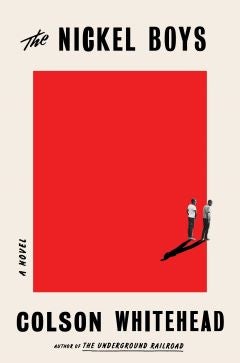 The Nickel Boys, by Colson Whitehead. 2019, 226 pages. (FINALIST)
The Nickel Boys, by Colson Whitehead. 2019, 226 pages. (FINALIST)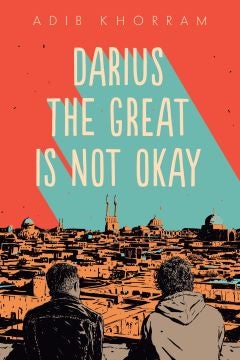 Darius the Great is Not Okay, by Adib Khorram. 2018. 320 pages (FINALIST)
Darius the Great is Not Okay, by Adib Khorram. 2018. 320 pages (FINALIST)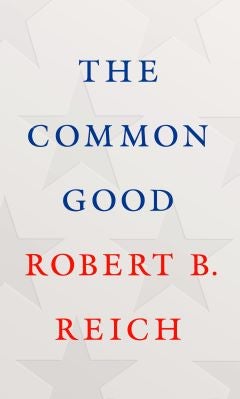 The Common Good, by Robert B. Reich. 2018. 208 pages (FINALIST)
The Common Good, by Robert B. Reich. 2018. 208 pages (FINALIST)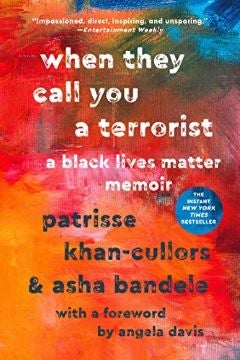 When They Call You A Terrorist: A Black Lives Matter Memoir, by Patrisse Khan-Cullors & asha bandele. 2018. 272 pages. (FINALIST)
When They Call You A Terrorist: A Black Lives Matter Memoir, by Patrisse Khan-Cullors & asha bandele. 2018. 272 pages. (FINALIST)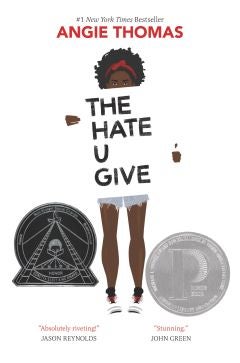 The Hate You Give, by Angie Thomas. 2017. 469 pages.
The Hate You Give, by Angie Thomas. 2017. 469 pages.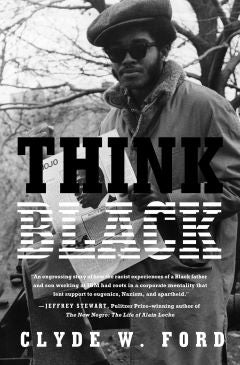 Think Black by Clyde W. Ford. 2019. 304 pages.
Think Black by Clyde W. Ford. 2019. 304 pages.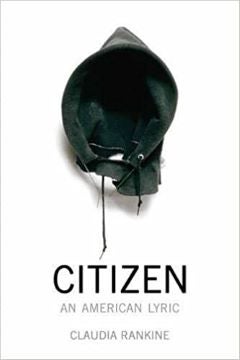 Citizen: An American Lyric, by Claudia Rankine. 2014. 160 pages.
Citizen: An American Lyric, by Claudia Rankine. 2014. 160 pages.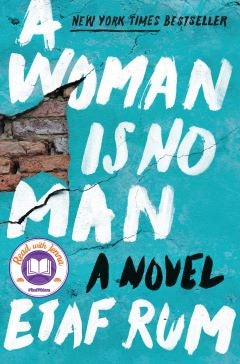 A Woman is No Man, by Etaf Rum. 2019. 357 pages
A Woman is No Man, by Etaf Rum. 2019. 357 pages Notes From A Young Black Chef, by Kwame Onwuachi. 2019. 280 pages
Notes From A Young Black Chef, by Kwame Onwuachi. 2019. 280 pages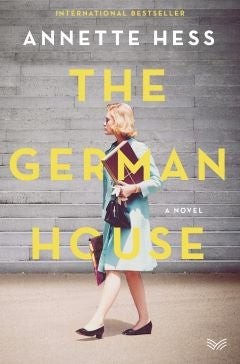 The German House, by Annette Hess. 2019. 336 pages.
The German House, by Annette Hess. 2019. 336 pages.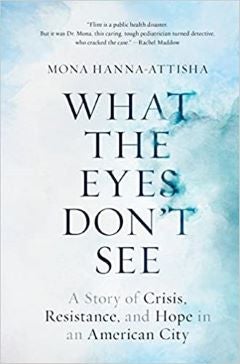 What the Eyes Don't See: A Story of Crisis, Resistance, and Hope in an American City, by Dr. Mona Hanna-Attisha. 2018. 352 pages.
What the Eyes Don't See: A Story of Crisis, Resistance, and Hope in an American City, by Dr. Mona Hanna-Attisha. 2018. 352 pages.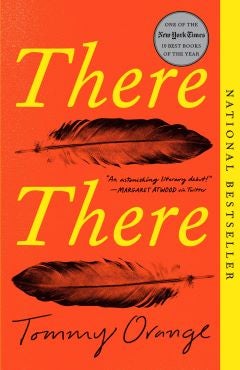 There There, by Tommy Orange. 2018. 276 pages.
There There, by Tommy Orange. 2018. 276 pages.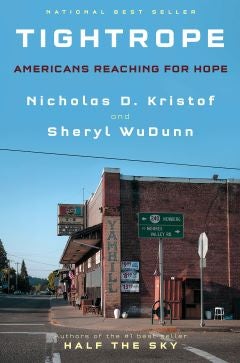 Tightrope: Americans reaching for hope, by Nicholas Kristof and Sheryl WuDunn. 2020. 321 pages.
Tightrope: Americans reaching for hope, by Nicholas Kristof and Sheryl WuDunn. 2020. 321 pages.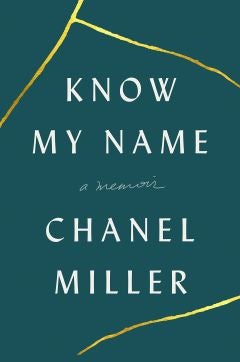 Know My Name, by Chanel Miller. 2019. 367 pages.
Know My Name, by Chanel Miller. 2019. 367 pages. We the Animals, by Justin Torres. 2011. 156 pages
We the Animals, by Justin Torres. 2011. 156 pages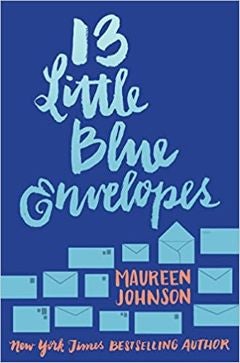 13 Little Blue Envelopes, by Maureen Johnson. 2009. 351 pages.
13 Little Blue Envelopes, by Maureen Johnson. 2009. 351 pages.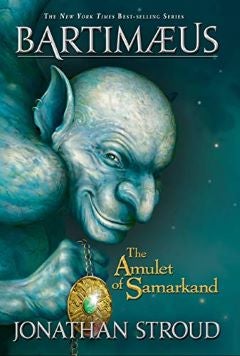 The Amulet of Samarkand, by Jonathan Stround. 2003. 464 pages.
The Amulet of Samarkand, by Jonathan Stround. 2003. 464 pages.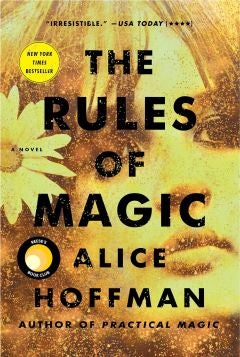 The Rules of Magic, by Alice Hoffman. 2017. 384 pages.
The Rules of Magic, by Alice Hoffman. 2017. 384 pages.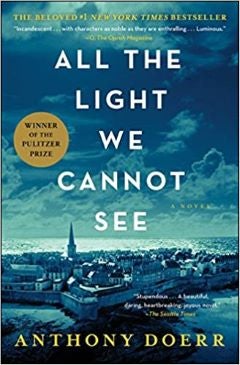 All the Light We Cannot See, by Anthony Doerr. 2014. 544 pages.
All the Light We Cannot See, by Anthony Doerr. 2014. 544 pages.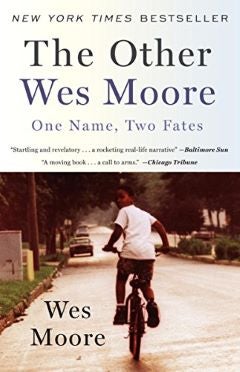 The Other Wes Moore, by Wes Moore. 2010. 256 pages.
The Other Wes Moore, by Wes Moore. 2010. 256 pages.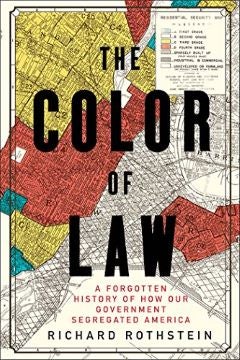 The Color of Law: A Forgotten History of How Our Government Segregated America, by Richard Rothstein. 2017. 368 pages.
The Color of Law: A Forgotten History of How Our Government Segregated America, by Richard Rothstein. 2017. 368 pages.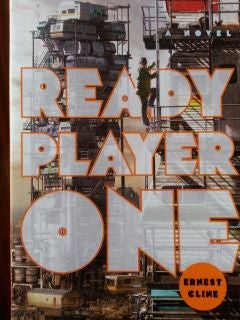 Ready Player One, by Ernest Cline. 2011. 579 pages.
Ready Player One, by Ernest Cline. 2011. 579 pages.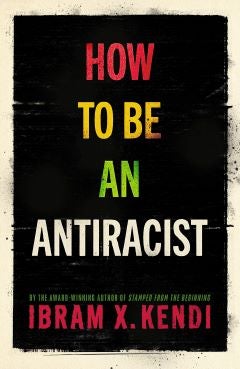 How To Be An Antiracist, by Ibram X. Kendi. 2019. 320 pages.
How To Be An Antiracist, by Ibram X. Kendi. 2019. 320 pages. Minor Feelings: An Asian American Reckoning, by Cathy Park Hong. 2020. 224 pages.
Minor Feelings: An Asian American Reckoning, by Cathy Park Hong. 2020. 224 pages.